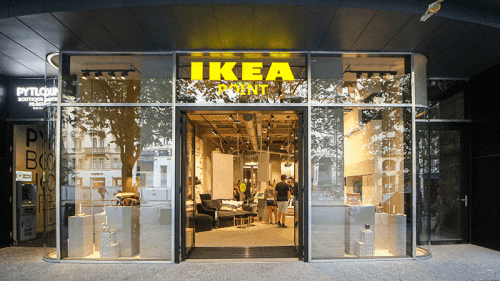Lenders are expected to move increasingly up the risk continuum this year due to a need for yield and the perceived value that commercial mortgages offer compared with other fixed-rate alternatives.
A significant revival is underway in the U.S. commercial real estate capital markets, which continued to see a significant ramp-up of transaction activity through the end of the first quarter despite significant global uncertainty. A combination of improving economic prospects, strengthening and more consistent employment growth, and a sustained very low interest rate environment is resulting in improving lender and investor confidence this year.
While the financing spigot was temporarily turned off in the downturn, a natural evolution occurred last year in which lenders returned to safe lending, targeting only low-leveraged, trophy assets. Now liquidity is more broadly returning to commercial real estate as demand has begun to exceed supply, and lenders are moving more aggressively to place capital. Lenders are expected to move increasingly up the risk continuum this year due to a need for yield and the perceived value that commercial mortgages offer compared with other fixed-rate alternatives. Meaningful spread premiums are currently being paid on commercial mortgages compared with comparably rated corporate bonds.
Lenders of every type—including life companies, pension funds, commercial banks, commercial mortgage–backed securities (CMBS) lenders, debt funds, and mortgage real estate investment trusts (REITs)—will all generally be ramping up allocations this year. That increased liquidity is seeking three primary types of different assets:
- Trophy deals—the highest-quality transactions in the best markets, typically with institutional-type sponsorship. A great deal of money continues to chase those relatively few deals, driving a scarcity premium in this market. These assets are often lower-leverage investment opportunities for lenders due to the nature of the ownership and likely will be the investment focus for portfolio lenders such as life companies, pension funds, and certain commercial banks and CMBS lenders willing to provide low interest rates with maximum flexibility.
- Tweener deals—those in between the trophy and the trauma assets. These include well-located, high-quality assets that are not yet fully stabilized; good assets that are well-leased but located in secondary or tertiary markets; and single-tenant or transition assets that have significant tenancy rollover or cash flow uncertainty during the anticipated holding period.
Owners of unstabilized or high-rollover assets are in many cases waiting to stabilize the buildings before either selling or placing permanent financing, and therefore tend to lean more toward shorter-term bridge-type financing and/or may be willing to provide some structure in the form of credit enhancements or guarantees in order to accommodate more efficient permanent financing. As such, these assets tend to be a focus for commercial banks, CMBS lenders, and certain debt funds and REITs. Because most major life insurance companies and pension funds tend to focus on major markets, the secondary and tertiary market assets will tend to be a focus for certain smaller life insurance companies and CMBS lenders.
- Trauma deals—assets in secondary or tertiary markets that are not well-conceived or well-located and are underwater. Opportunistic capital is still available for these highly distressed assets; however, these real estate owned (REO) opportunities have not materialized to the extent that the market at large had originally anticipated. Distressed property offerings from owners or servicer/lenders who have assumed control of distressed properties have been relatively limited because lenders typically have preferred to extend loans rather than foreclose.
Special servicers that control assets also often elect to hold buildings, opting to wait for additional leasing to increase their value. They must balance their obligation to recover maximum value for the bondholders with their own self-interest—for example, the ability to generate fees by holding assets instead of selling because they believe they can create value by leasing the buildings as the markets improve. Many lenders remain unwilling to sell and clear their balance sheets because they will incur losses or have not adequately written down the values of the assets. In some cases, owners are saving their deals by teaming up with joint venture partners to shore up the capital structure.
The investment opportunities in these trauma deals will be a focus for many of the more yield-driven lenders and investors, such as debt funds and mortgage REITs.
While the asset REO offerings are few and far between, an increasing number of distressed loans and loan portfolios are hitting the market. Loans that were reset two years ago with short-term financing in the hopes of hurdling the drought will mature in the months to come, introducing more opportunity for savvy investors to gain control of a property through loan-to-own plays and as deed-in-lieu transfers.
The majority of note sales coming to the market this year will be small-balance notes. In the outstanding CMBS universe, about 72 percent of loans by count are for $10 million or less, and 91 percent are for $25 million or less. These smaller-balance loans likely will be liquidated at a faster pace than others, and mezzanine loan positions, in which a buyer can take control of the asset, are becoming increasingly valuable as well.
Hundreds of billions of dollars of overleveraged commercial loan assets remain that still require recapitalization and deleveraging. However, a lack of capital is definitely not the problem.
In 2010, total new CMBS issuance in the United States rose to $10.9 billion, up fivefold from the $2.1 billion overall issuance in 2009, and estimates for 2011 range from $35 billion to up to $50 billion.
With fresh capital sources returning to the market, stronger competition is affecting investment sales terms as capitalization rates that peaked in the first quarter of 2010 are now clearly compressing. At one end of the spectrum, robust demand for trophy office properties in top-tier and some secondary markets has pushed cap rates down by nearly 200 basis points and caused values to rebound by up to 40 percent in certain cases from the market’s trough. Interest in multifamily properties has also been very strong from both lenders and investors and is expected to stay that way due to pent-up demand coming from a weak residential housing market.
As investment demand continues to increase, the market should become more pliable, enabling more transactions to occur. History has shown that in a capital-driven market, investors typically broaden their horizons to include a wider variety of buildings, including the best, most stable buildings in the secondary cities where they can achieve a yield premium. A stockpile of equity desperate for yield, supported by low-cost debt, providing positive leverage should enable the number of transactions to increase as the economy and leasing markets improve.




